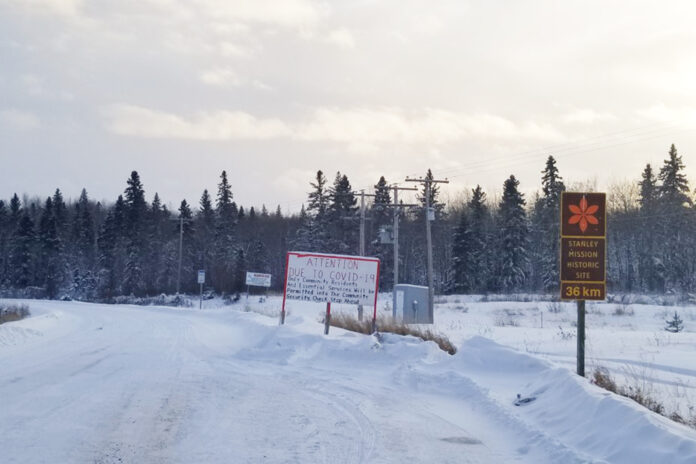
Active COVID case numbers in First Nations communities across Canada have declined for the 10th straight week, the federal government reported on Wednesday.
The most recent data shows 635 active cases, a significant drop from the roughly 5,000 reported in January.
Dr. Evan Adams, Indigenous Services Canada’s deputy chief medical officer of public health, called it an extraordinary trend, and credited it to solid local leadership and high uptake levels of the COVID-19 vaccine.
“We were worried there would be a lot of hesitancy (to get the vaccine) but that doesn’t seem to be quite the case,” Adams said during a press conference on Wednesday. “Generally, our vaccinations have been quite highly accepted. We would like to continue to do better, and we mean that for all Canadians.”
“Of course, it’s a number of other factors as well,” he added. “But, it certainly must be related to our success with vaccinations.”
Adams identified the Prince Albert Grand Council as an example of an Indigenous organizations doing an excellent job of creating partnerships and boosting vaccine uptake among its members. He also commended the Saskatoon Tribal Council, and Battlefords Agency Tribal Chiefs Inc.
As of April 5, healthcare workers have administered 257,279 doses in 612 First Nations, Inuit and territorial communities. The government says roughly 60 per cent of Indigenous adults living in those communities have received at least one dose.
Tracking numbers for Indigenous people living in major cities has been a greater challenge. Federal Indigenous Services Minister Marc Miller said Manitoba and British Columbia have led the way in breaking down data for large urban centres, while other provinces have been less consistent.
The areas where they have reliable data show vaccine uptake rates of more than 90 per cent among First Nations adults. However, Miller also acknowledged that not all First Nations peoples were lining up to get vaccinated.
“There are pockets. I won’t deny it,” Miller said on Wednesday. “We shouldn’t deny it, but what I’ve seen is when we work with those communities that for one reason or another have a level of caution with respect to the vaccine, we see really good work that can come from it…. I wouldn’t say I’m not worried, but I’m very, very optimistic about the work that’s being done to make sure people are protected.”
Miller added that strict adherence to public health measures are also helping drive down the number of cases in First Nations communities. However, he dismissed the idea that some communities could begin relaxing them.
“This isn’t the time to talk about it,” he told reporters. “We still don’t know … how long the vaccine will protect people. We don’t know what it does on the incidences of asymptomatic transmission, once you have the vaccine and perhaps contract it, but have less severe outcomes. There are a lot of unknowns, and until we know or have a better sense of things, we need to adhere to the public health measures.”
Miller urged residents to trust local health leaders because they are the best source of information.
Federal health officials said there are still major challenges ahead in convincing young people to get vaccinated. Valerie Gideon, the senior assistant deputy minister for the First Nations and Inuit Health Branch of Indigenous Services Canada, said adults between the ages of 18 and 30 are particularly reluctant. However, she’s confident community partnerships and giving young adults time and space to make an informed decision will prove effective over time.
“Education is making a difference,” she said.
Adams said it’s not surprising to see some reluctance when it comes to any vaccination campaign. Like Gideon, he emphasized the need for education and patience in any attempts to increase vaccination rates.
“Doing outreach, providing credible, reliable, reassuring information to those who are still on the fence, and continuing to give opportunities for vaccinations is at the heart of the work,” he said.
Federal data shows the rate of reported cases in First Nations communities is 187 per cent higher than the general Canadian population. Miller said that’s largely due to housing and pre-determined health outcomes.

